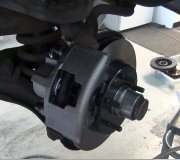Do not use a c-clamp. If you NEED that, you have junk, as in dirt or rust buildup inside the caliper bore. Use both hands and you can squeeze the piston in. Use a little brake fluid or brake assembly fluid, (which is just thick brake fluid), to lubricate the square-cut seal. That will make the piston slide in easier. To get the boot over the piston you can blow it up with compressed air through the hose hole, (my preferred method), you can place the boot on the piston first, then use the piston as a handle to set the boot into the caliper, (easy method for Chryslers), or you can buy a special pliers with curved jaws to spread the boot open to allow the piston to be dropped in. Those pliers didn't even exist, at least that I knew about them, in the '80s when we rebuilt every caliper with every brake job.
The product you mentioned sounds like what we used to make expanding exhaust pipes easier. That was a silicone-based product and you don't want that anywhere near brake fluid. It is supposed to spread around and will make rubber parts slide onto metal parts very easily, but then it evaporates. It will leave a film of "slippery" behind but it won't hang around to lubricate anything. If what you have is something different and it says it's okay to use on brake parts, go for it. The Rusty Lube I mentioned was real common in the '80s and '90s but there are a lot of other good products out there. They all contain molybdenum disulphide.
Sunday, August 4th, 2013 AT 2:42 PM



